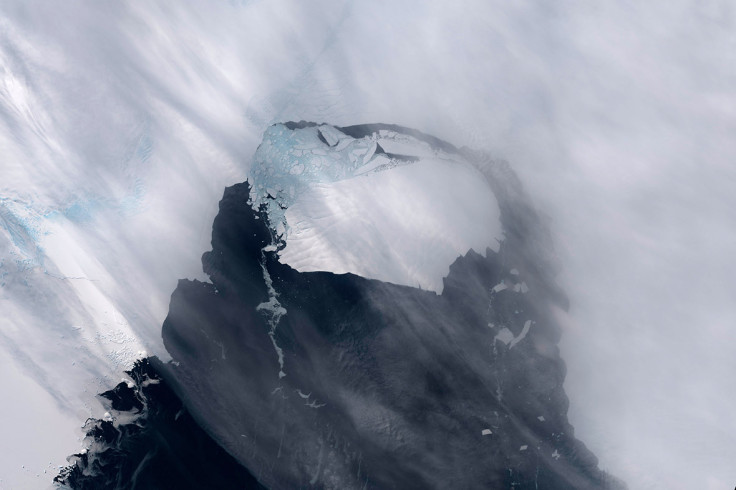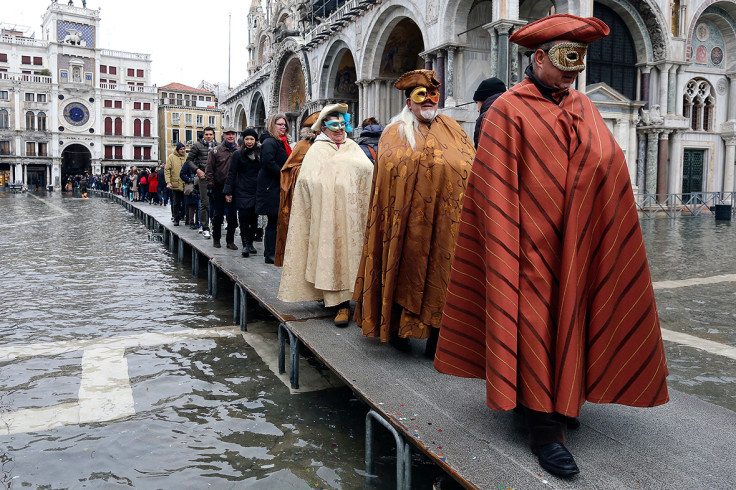Barack Obama's apocalyptic warnings about our oceans betray the opportunities hidden in their depths

During his recent three-day visit to Alaska, US President Barack Obama warned that the effects of global warming could lead to "submerging entire countries, annihilating cities and leaving fields barren" unless more is done to reduce carbon dioxide emissions.
His carefully choreographed trip with backdrops of receding glaciers, eroded shorelines and rising seas was organised to support his drive for an international accord to reduce greenhouse gas emissions at a United Nations (UN) summit in Paris this December. The president's apocalyptic warnings presented our changing relationship with the oceans as a huge threat.
Yet our oceans and changing climate present us with opportunities, including mineral exploration where Arctic ice has melted. Obama chose not to highlight his previous approval of offshore drilling by Royal Dutch Shell in Arctic Alaska during his press statements while in this region.
Shell subsequently announced it would stop exploration off the coast of Alaska for the foreseeable future, after limited discoveries of oil and gas, falling prices for these commodities and mounting criticism from environmental activists. This decision has come as a blow for many Arctic residents who depend on revenue from oil and gas for their livelihoods.

Hopefully, the opening of the Northwest Passage and several other routes through the Arctic due to melting ice will provide new opportunities. The Northwest Passage was first navigated by a cargo ship without the assistance of an icebreaker in 2014. Although this route is not passable during the winter, the melting of Arctic ice has opened up this and other routes.
These routes provide cargo vessels with much shorter journeys between northern countries like Canada and south-eastern countries such as China, rather than travelling through the Panama Canal. This saves time, money, fuel and reduces greenhouse gas emissions. Even cruise ships and yachts have successfully navigated the Northwest Passage over the past couple of years.
But warming temperatures and melting ice also create challenges. Despite the slowing of climate warming over the past decade, global temperatures increased by 0.74C between 1906 and 2005. Warming has expanded the oceans and sea levels have also risen due to the melting of land-based ice (glaciers and polar ice caps). This has led to a 20cm rise in global sea levels since the 1880s, which has a varied impact in different locations.
I live in the Venice region of Italy and over the past 18 years have been researching the city's relationship with its waters. A mobile dam project to protect Venice from flooding began soon after Unesco brought experts together to debate the Venice problem of flooding in 1969. The dams are designed to temporarily close the three inlets between the Adriatic Sea and the Venetian lagoon when high tides are forecast. The dams are expected to be completed over the next few years.
Even though Venice's flooding worsened between 1930 and 1975 principally due to land subsidence, more recently this dam project has been widely discussed as a response to rising sea levels and global warming. Indeed, a report published in 2011 by Unesco designating Venice as a locally endangered example of global rising sea levels due to climate change and referred to the mobile dams. This followed the publication of the book Venice Against the Sea: A City Besieged by American journalist John Keahey, in 2002.

The contemporary perception that Venice is threatened by the sea starkly contrasts with the ancient Venetians' view of their relationship with surrounding waters. One of the most important dates in the medieval Venetian calendar was a maritime expedition held annually on Ascension Day, which developed from approximately the year 1000 AD.
During the 13th century, the rite of Venice wedding the sea was added. This became the Marriage to the Sea ceremony and Venice's ruler, the Doge, sailed on his spectacular boat with numerous other vessels to the Lido inlet between the lagoon in the sea. Then he cast a golden ring into the waters to symbolise the marriage between the city and the sea. This ceremony emphasised that Venetians were married to the sea and were not against it.
The waters that surround the Venetian Islands provided protection, salt and fish to people who built permanent settlements on these islands from the sixth century (AD). As they created industrial scale shipbuilding, Venetians benefited from growing maritime trade and Venice became the trading gateway between east and west until the end of the 15th century.
For most Venetians, flooding is now considered an inconvenience rather than a disaster. Nevertheless, the dominant contemporary narrative developed in the media and by institutions like Unesco is that Venice is threatened and against the sea.
With less developed infrastructure, more primitive boats and weaker capacity to forecast and respond to the weather, medieval Venetians undoubtedly suffered much more from flooding than contemporary Venetians.
Even during the worst high flooding in Venice in modern memory, 3-4 November, 1966, nobody died in the historical centre of Venice due to these floods. Residents who suffered from flooded homes were efficiently evacuated and the city was functioning effectively again within a week.
Since then, Venice has become better protected with internal work on the islands to raise structures and through pumping, drainage and the construction of breakwaters and jetties. These measures mean Venice now has better protection against low and medium level flooding and the mobile dams should help block the highest tides. Moreover, Venice's tide forecasting centre can send emails and text messages when floods are predicted to help people prepare for them.
For most Venetians, flooding is now considered an inconvenience rather than a disaster. Nevertheless, the dominant contemporary narrative developed in the media and by institutions like Unesco is that Venice is threatened and against the sea. This narrative resonates with the wider depiction of humanity facing peril from the oceans due to global warming, as promoted by President Obama and UN bodies.
But we can adapt to our changing climate and our oceans still present us with incredible opportunities in terms of transport, medical advances and sources of energy, food and minerals. However, if we are to take advantage of these opportunities we need to consider adopting a positive viewpoint towards the oceans, similar to medieval Venetians, rather than the apocalyptic outlook of President Obama.
Dr Dominic Standish is author of Venice in Environmental Peril? Myth and Reality (UPA, 2012) and lectures for Iowa University at its CIMBA campus in the Venice region of Italy. He is speaking at the Battle of Ideas festival on 'Plumbing the depths: the battle for the oceans' on 17 October at London's Barbican. IBTimes UK is a media partner to the festival.
© Copyright IBTimes 2025. All rights reserved.






















